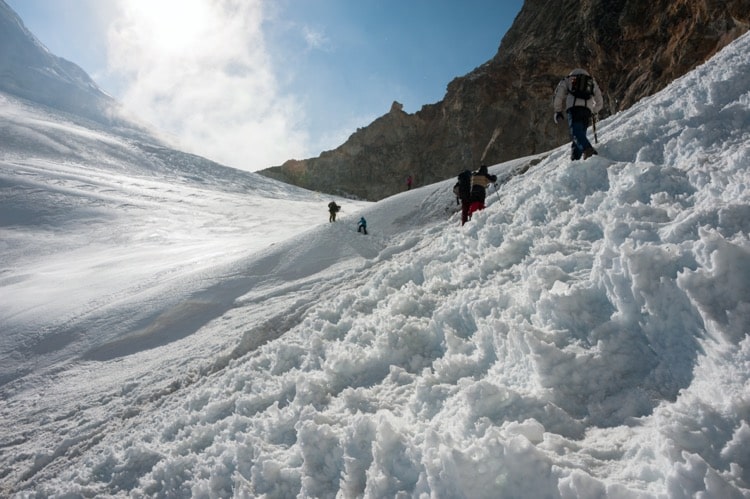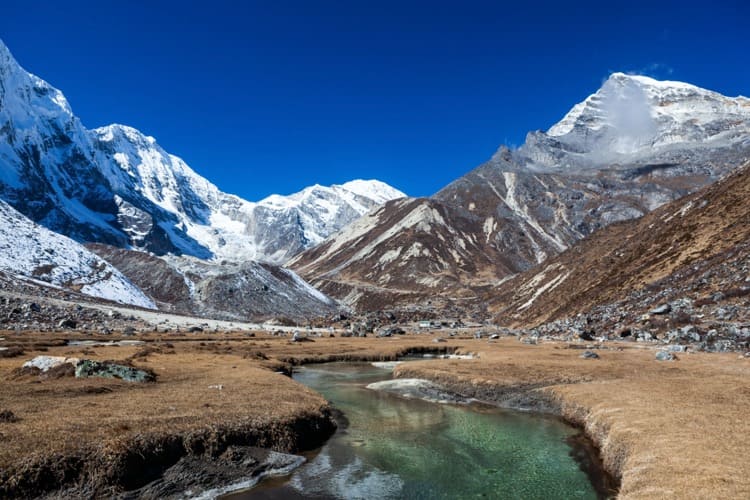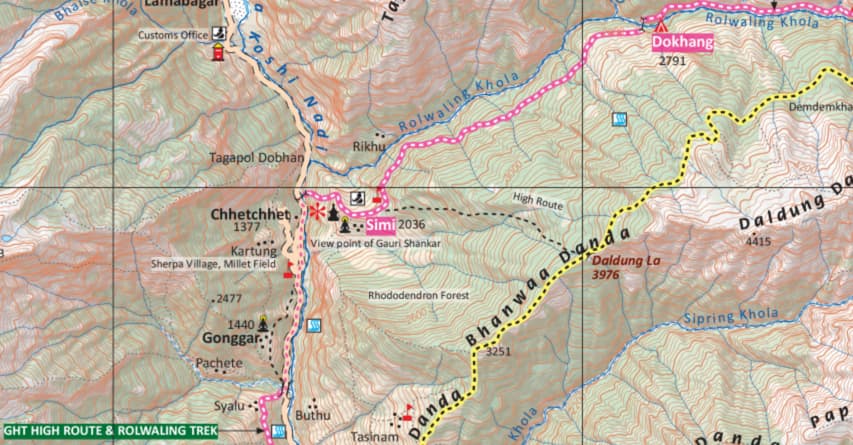Tashi Lapcha Pass Trek
Request a Quote (?)
- Satisfied Client
- Personalised Guide
- Instant Response
Get Instant Response:
+977-9851329446 (Whatsapp)
| Starts at: Shigati | Ends at: Lukla |
| Trek Region: Rolwaling | Transport: Flight |
| Duration: 16 Days | Trip Grade: Strenuous |
| Max Altitude: 5682 m / 18641 ft | Accommodation: Teahouse |
The Rolwaling Tashi Lapcha Pass trek goes through the Gauri Shankar Conservation Area and the Sagarmatha National Park, linking the Rolwaling Valley with the Everest region.
This trek will visit the beautiful Tso Rolpa Lake (4183 m), summit the Tashi Lapcha Pass (5682 m), visit Namche Bazaar, and offers superb breathtaking views of Gauri Shankar and Everest, and many other mountains. The Tashi Lapcha Pass is perhaps the most difficult in this region, so a high level of fitness and stamina is required.
This is reportedly one of the possible routes that people from Kham in Tibet used during the mid-1800’s. These people subsequently settled in this area and the Everest region and are now known as Sherpa. Therefore, this trek also has historical and cultural significance. After crossing the pass and coming into the Everest region, there are glorious views of Mount Everest, Nuptse, Lhotse, Ama Dablam, Thamserku and Kusum Kangaru. And once reaching the bustling market town of Namche Bazaar there is an opportunity to interact with other trekking and climbing groups as well as the Sherpas.
But before that, aside from perhaps spotting a snow partridge or two, and coming across herds of yaks (or more specifically, naks) producing milk for cheese making, don’t forget to look out for the fabled Yeti. It was on the slopes of the Rolwaling Peak that Eric Shipton photographed Yeti footprints in 1951!
This trek certainly combines history and culture with stunning mountain views, and the satisfaction of crossing a high Himalayan pass.
Tashi Lapcha Pass Trek Itinerary
Day 1: Kathmandu to Shigati (Drive)
Shigati – 950 m / 3116 ft – 9 hrs
Day 2: Shigati to Jagat
Jagat – 1050 m / 3444 ft – 6 hrs
Day 3: Jagat to Simi Gaun
Simi Gaun- 1900 m / 6233 ft – 5 hrs
Day 4: Simi Gaun to Gyalchen
Gyalchen – 3300 m / 10826 ft – 6 hrs
Day 5: Gyalchen to Beding
Beding – 3650 m / 11975 ft – 4 hrs
Day 6: Beding to Na Gaun
Na Gaun- 4100 m / 13451 ft – 4 hrs
Day 7: Acclimatization Day
Na Gaun- 4100 m / 13451 ft – 2 hrs
Day 8: Na Gaun to Tso Rolpa Lake
Tso Rolpa Lake – 4183 m / 13723 ft – 4 hrs
Day 9: Acclimatization Day
Tso Rolpa Lake – 4183 m / 13723 ft – 1 hr
Day 10: Tso Rolpa Lake to Tso Rolpa Phedi
Tso Rolpa Phedi – 5682 m / 18641 – 4 hrs
Day 11:Acclimatization Day
Tso Rolpa Phedi – 5682 m / 18641 – 2 hrs
Day 12: Tso Rolpa Phedi to Ngole via Tashi Lapcha Pass
Tashi Lapcha Pass – 5110 m / 16765 ft – 9 hrs
Day 13: Ngole to Thame
Thame – 3820 m / 12532 ft – 6 hrs
Day 14: Thame to Namche Bazaar
Namche Bazaar – 3438 m / 11279 ft – 6 hrs
Day 15: Namche Bazaar to Lukla
Lukla- 2860 m / 9383 ft – 7 hrs
Day 16:Lukla to Kathmandu (Flight)
Kathmandu – 1380 m / 4527 ft – 30 min
Not satisfied with this Itinerary?
Are you interested on planning custom trip? It only takes 2 minutes.
Includes
- 15 nights accommodation in tents
- Guide for 16 days
- Cook for 16 days
- Required number of porters for 16 days
- Kathmandu Shigati private jeep
- Lukla Kathmandu flight
- Restricted area permit
- Gaurishankar conservation area permit
- Sagarmatha national park entry permit
- Staff insurance and necessary ground transport for support staff
- 16 x set breakfast, 15 x set lunch and 15 x set dinner while on trek.
- Meals and accommodation in Kathmandu


